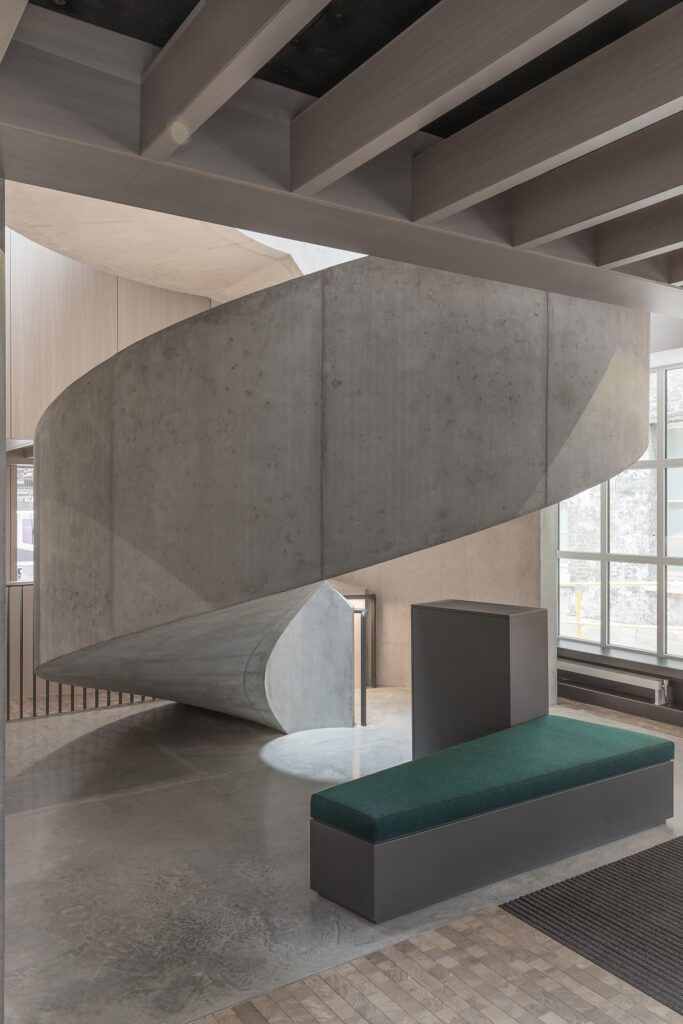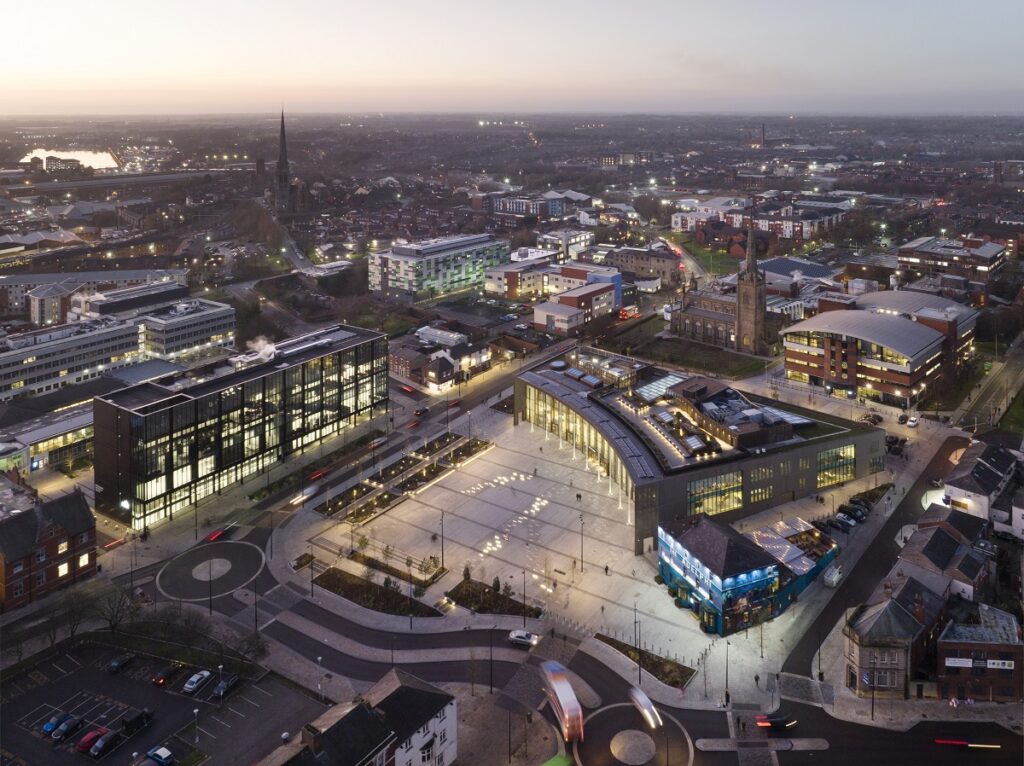Adapting UK universities to address energy efficiency and decarbonisation
Amidst rising inflation and changing teaching models, UK universities must answer tough questions about their purpose, priorities, and sustainability, as AECOM’s Steven Jenkins and Rory Armstrong report.
In 2023, universities are facing two key major issues. The first is rising energy prices. Universities are research, people and data-intensive and consume vast amounts of power, and thus face particularly high bills. One major UK university reported a rise in its total energy bill from £30 million per annum to £70 million in 2022; such price hikes will influence their appetite for spending on new major infrastructure projects.
The second issue is decarbonisation. Many universities are committed to achieving net zero carbon emissions by 2030. However, universities tend to have large physical estates. Many include buildings which are decades, or even centuries old, which were not built with energy efficiency or decarbonisation in mind.
Purposeful design goes a long way
Over the past decade, brand new buildings sprang up on university campuses to attract attendees and to deploy the capital raised from fees. This is reflected in the far higher standard of student accommodation which has now become an expectation across the UK. However, looking ahead, many universities will have to manage their budgets carefully. We could see an uptick in refurbishment projects as universities assess their estates, and as funding becomes more challenging in the face of high energy costs and inflation.
When looking at the commissioning and design of new buildings, some universities prize architectural merit and distinctive designs which single them out as world-leading centres of excellence for a specific discipline. Many universities have buildings of historic importance, or have simply become iconic parts of a city or town’s architecture and landscape. In these cases, buildings may be retained even if they are difficult to integrate into modern-day education and sustainability requirements.
Other, more practical, or teaching-intensive universities will require simpler buildings which can accommodate as many students as possible, with 1.5-2 metres of teaching space allocated per person.

Harnessing smart technology for campuses
Today, as in the professional workplace, students and academics are largely embracing a hybrid, flexible approach to studying, which necessitates less physical teaching space and strong IT infrastructure. Decarbonisation, digitisation and energy efficiency are increasingly dovetailing with each other. IT master plans are emerging that enable the digital student experience and teaching model to connect to physical spaces – the smart campus concept.
Under this model, physical aspects of a university are linked and respond flexibly to their users via smart devices, monitoring systems and sensors. For example, desks in a library building might be equipped with sensors to measure room usage, and reduce lighting and heating in unoccupied spaces.
Creating more inclusive, welcoming spaces is also rising in importance. Recent AECOM projects include interventions that support neurodivergent students and building users. Enabling excellent accessibility throughout physical buildings, supported by smart technology, is now a principal design tenet – creating the ability to open doors via a smartphone, for example, or to message a reception desk to help staff prepare a physical space ahead of a person’s arrival.
Enabling the local community to better integrate with university building is increasingly a feature of new developments. For example, the ground floor of a new research building could be made accessible to the public, enabling local people to access learning, research, and coffee shop facilities. Not only can this improve educational and social outcomes for local communities, it can also help students to feel more at home in the town or city they are studying in.

Meeting sustainability and net zero targets
Many institutions within the university sector, with its focus on innovation and research, are committed to becoming trailblazers in sustainability. As a result, willingness to invest is high and many of the lower-carbon technologies and materials deployed in university building projects later trickle through to other sectors.
The net zero goal is strongly influencing university’s master plans and use of space. By creating more compact, well-utilised spaces, the goal is to reduce embodied carbon and to reduce unnecessary energy use.
As with other sectors, refurbishments have become key to meeting embodied carbon reduction goals. In many cases, the embodied carbon profile of improving an older building is far lower than creating a new building. Refurbs are set to become a mainstay of order books in the years ahead, as asset owners look to adapt their portfolios to meet decarbonisation requirements.
However, many universities are asking for Passivhaus principles to be applied to new projects; this may favour new build over refurbishment to achieve the goal of air-tight buildings, or divestments of old buildings to make way for new assets with assured quality.
Alongside Passivhaus and LETI principles, other accreditations such as the US-based WELL standard are rising in uptake.

Ensuring a financially viable future for universities
As in other sectors, there are ongoing challenges around procurement and cost increases. AECOM’s TPI indices rose 9.9 per cent year-on-year in 2022, with a 6.9 per cent increase anticipated in 2023. Combined with rising energy costs, creating financially viable new projects is currently difficult.
Despite the challenges, it is important to note that overall, UK universities’ incomes are increasing. According to the University and College Union (UCU), in 2020/21, the most recent financial year, universities finished with £3.4 billion more cash than they started it with. The combined surplus of the universities of Cambridge and Oxford in 2020/21 alone was £1.7 billion. University leaders also told regulator the Office for Students (OfS) that they were planning to increase overall capital expenditure by 36 per cent in 2022/23, to £4.6 billion.
The question is where they will allocate this money. Trade unions are calling for it to be diverted away from capital spending, and instead spent on increasing teaching wages, or on technology rather than on physical assets; it could be stockpiled, rather than spent. Outside of broader macroeconomic forces, these are perhaps the most influential factors on whether we will see a strong pipeline of university building projects in the near and mid-term future.
Cost model: Tertiary education
We have built a cost model based on a new university academic building in a city centre in southern England, with a GIA of 30,000m2 and designed to achieve BREEAM Excellent. It includes NIA areas of circa 6,000m2 multipurpose teaching spaces, 3,000m2 research space, 3,000m2 open plan and cellular offices and 1,500m2 engagement spaces. Costs assume a two-stage design and build procurement process.
You can download the cost model here.
This is an abridged version of an article that was first published in Building magazine. You can read the full article by clicking here.






